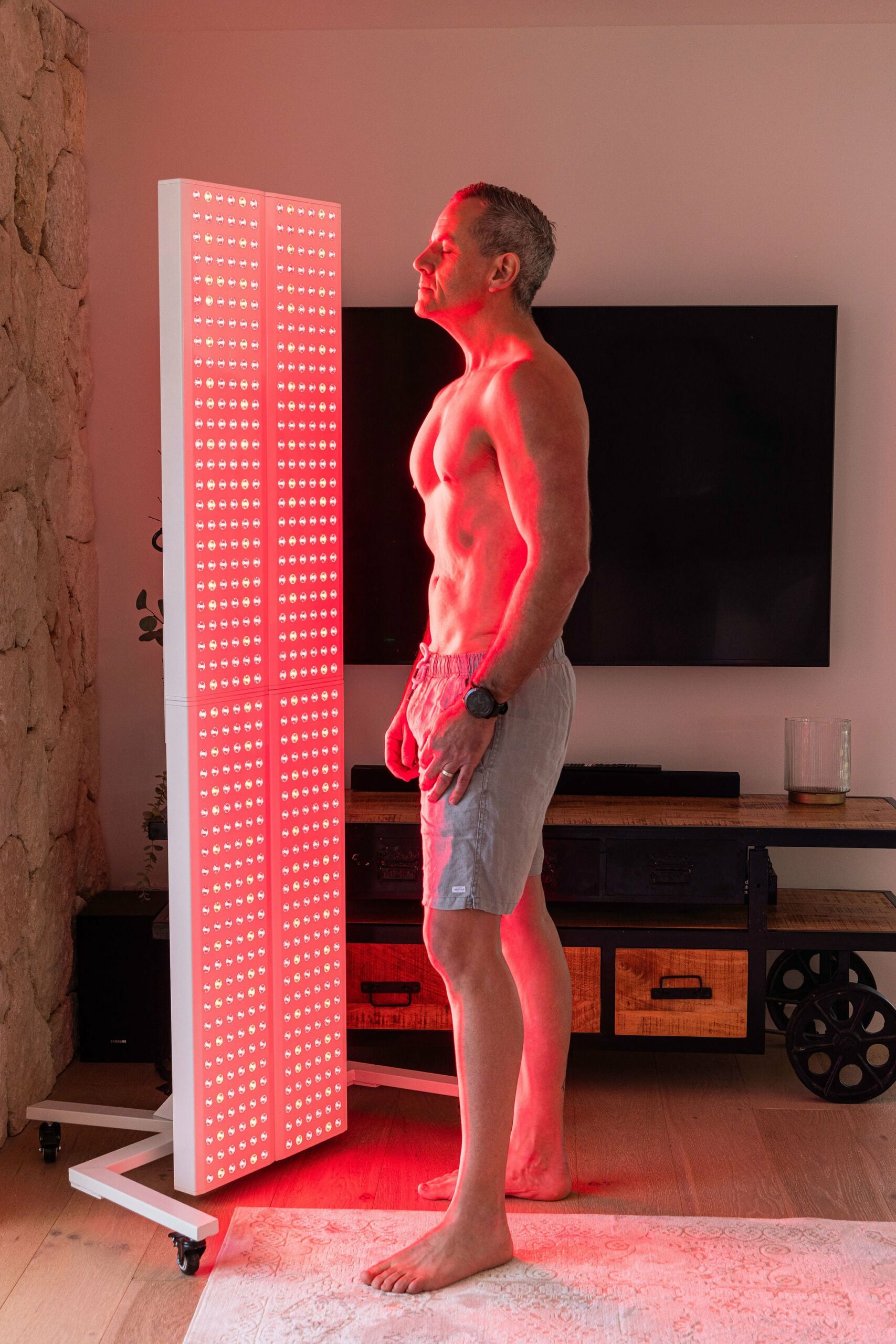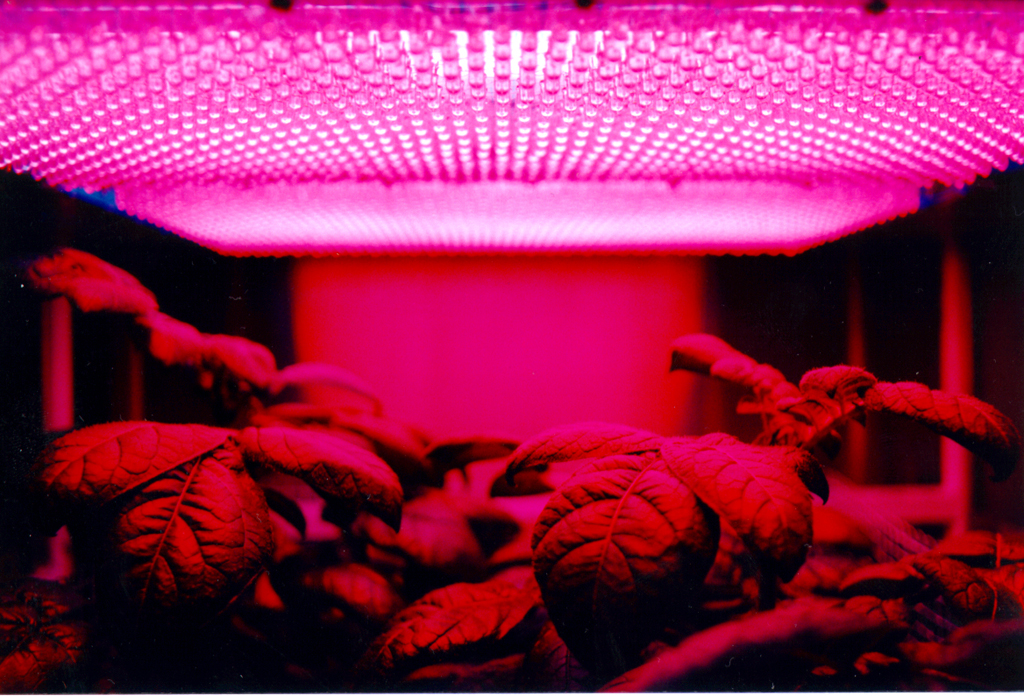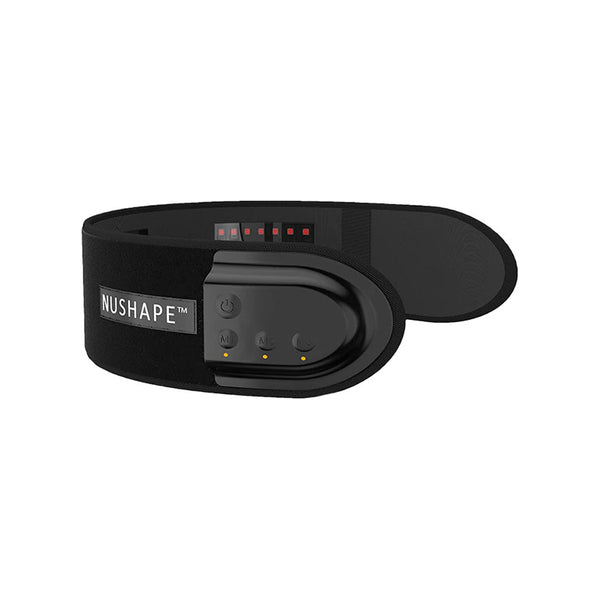Nushape NeuroPulse PRO:A Leap Forward in Transcranial Light Therapy
Meet the NeuroPulse Pro transcranial light therapy device, a cutting-edge tool in the realm of red light therapy for brain wellness, serving as a notable advancement from the manufacturer preceding NeuroPulse model.
The NeuroPulse Pro seamlessly marries Pulsed Electromagnetic Field (PEMF) and targeted light therapies to create a potent, dual-faceted approach to brain wellness, accessible from the convenience of your home. It utilizes red to near-infrared light through brain photobiomodulation, rejuvenating brain tissues and cells, and, when synergized with PEMF therapy, proficiently alters brainwaves, encouraging states of relaxation and focus.
Not only does this emerge as a key tool for bolstering mood and mitigating anxiety and mental fog, but it also stands as a valuable asset in neural regeneration. Consequently, the NeuroPulse Pro, extending the capabilities of the admired NeuroWrap, provides a tailored PEMF setting, aiming to navigate and alleviate a myriad of cognitive and emotional challenges, such as memory loss and cognitive impairment, making it particularly beneficial for individuals navigating various neurological conditions.
Nurturing Alertness and Overall Brain Wellness:
Focusing on enhancing alertness, cognitive abilities, creativity, and focus, the NeuroPulse Pro aspires to manage sleep, promote healthy sleep routines, and amplify cognitive performance, concentration, memory, mood, and creative thinking.
This device provides three distinctive modes:
- Mode 1 (M1): Aims at cognitive wellness, applying PEMF frequencies from 10Hz to 50Hz to potentially alleviate symptoms like headaches, memory issues, and brain fog.
- Mode 2 (M2): Targets psychological well-being with PEMF frequencies from 3Hz to 55Hz, aiming to assist those dealing with insomnia, subpar sleep, anxiety, and depressive symptoms.
- Mode 3 (M3): Focuses on neurological ease, employing 10-40Hz Red Light Therapy (RLT) with wavelengths from 630nm to 810nm.
No matter whether your goal is to enhance sleep quality, uplift your mood, or boost cognitive functionality, NeuroPulse Pro endeavors to be a substantial addition to your wellness toolkit.
Good For:
NeuroPulse PRO: How Does it Rate?
Pros
- Non-Invasive Cognitive Support: Offers supportive cognitive enhancement without surgeries or medications.
- User-Friendly: Designed for easy use with clear instructions and straightforward settings.
- Multifaceted Benefits: Addresses various aspects of mental health, including cognitive and psychological well-being.
- Flexible Usage: Can be utilized at any convenient time, providing adaptable application.
- Scientifically Backed Technology: Utilizes red and near-infrared light technology, backed by scientific research.
- Portable and Compact: Facilitates use in various locations due to its compact and travel-friendly design.
- Multiple Modes for Diverse Needs: Features varied modes to cater to different neurological and mental health needs.
- Safe to Use: Ensures safe application through adherence to established safety parameters.
- Aids in Relaxation and Sleep: Promotes relaxation and assists in managing sleep patterns effectively.
- Potential Long-term Benefits: May provide enduring cognitive and brain health advantages with regular use.
Cons
- Price Point: May be perceived as a substantial investment for some users.
- Limited Accessibility: Availability might be restricted to specific regions or online platforms.
- Not a Substitute: Cannot replace professional medical advice or treatment.
- Potential for Overreliance: Users might lean too much on the device for cognitive improvements, lifestyle changes are also advisable.
- User Experience Variances: Effectiveness and results might differ among individuals.
- Limited Research: The field of transcranial photobiomodulation is still emerging with ongoing research.
- Sensitivity Issues: Some individuals may experience sensitivity to light or electromagnetic fields.
- Warranty: Limited to 1 Year
About the Brand
NUSHAPE is a brand that has positioned itself at the intersection of health, wellness, and technology. Renowned for its innovative, non-invasive body contouring and wellness devices, the brand aims to bring professional-grade treatments to the comfort of one's home. Leveraging advanced red-light therapy technology, which has been extensively studied and approved by regulatory bodies like the FDA, NUSHAPE provides effective, safe, and affordable solutions for weight loss, skin tightening, pain and inflammation management, and brain and overall wellness. Venturing into the realm of brain health, NUSHAPE also brings to the forefront two remarkable devices aimed at enhancing cerebral wellness: the Neurowrap and the latest addition, the NeuroPulse PRO, broadening their spectrum of health and wellness solutions.
How Does the NeuroPulse PRO Work for the Brain?
NeuroPulse PRO takes a dual-faceted approach, wielding two powerful technologies, Pulsed Electromagnetic Fields (PEMF) and Red Light Therapy (RLT), to foster brain wellness and address a variety of cognitive and emotional challenges.
PEMF, or Pulsed Electromagnetic Fields, acts somewhat like a revitalizing agent for your cells, particularly when they're sapped of energy. Imagine your cells as tiny batteries, and as your day progresses, they naturally lose some of their charge, making you feel fatigued. PEMF steps in to rejuvenate these cells, ensuring your body and mind retain their vigor. This technology not only aids in managing various conditions ranging from chronic pain to depression but can also be a vehicle to enhance cognitive functions and foster overall well-being. Different frequencies, or hertz (Hz), of these electromagnetic pulses, are employed to cater to diverse needs, such as reducing nerve sensitivity, stimulating endorphin production for stress relief, and encouraging cell creation and repair.
RLT, or Red Light Therapy, harnesses specific frequencies of light, between 10Hz and 40Hz, to stimulate cellular activity in the brain. It also encourages cerebral blood flow and enhances energy production within the cells (ATP), further facilitating brain repair and offering neuroprotection while mitigating inflammation. For instance, 10Hz aligns with the alpha rhythm of our brain, supporting learning and mental coordination, while 40Hz, akin to the gamma rhythm, promotes an increase in dopamine and serotonin, improving mitochondrial function and thereby elevating energy levels.
In the NeuroPulse PRO, PEMF and RLT converge to create a synergistic impact. The integration of precise light frequencies with thoughtfully modulated electromagnetic fields aims to envelop your brain in a therapeutic environment, promoting enhanced cognitive function, emotional wellness, and a balanced state of mind.
What Are the Benefits of Transcranial Red Light Therapy for the Brain?
Numerous studies have highlighted the potential of Red Light Therapy (RLT) not only as an avenue for optimizing brain health but also as an effective treatment for a range of brain conditions. These include Alzheimer's Disease, Parkinson's Disease, stroke, traumatic brain injuries, autism and more.
A study published in 2016 by Michael R. Hamblin in BBA Clinical highlights the potential of NIR light to treat traumatic (stroke, TBI) and neurodegenerative and psychiatric diseases
Thanks to a growing body of research the the potential benefits of red light therapy (RLT) for these conditions are becoming increasingly evident.
Potential benefits of red light therapy (RLT) for traumatic brain injury (TBI)
The efficacy of Red Light Therapy (RLT) in treating Traumatic Brain Injury (TBI) is backed by growing scientific evidence. Key potential benefits include:
- Improved Cognition: Research, including studies by the U.S. Department of Veterans Affairs, indicates red light therapy may enhance cognitive functions such as memory, attention, and problem-solving in TBI patients.
- Accelerated Healing & Neuronal Repair: By boosting mitochondrial activity, red light therapy could speed up tissue repair and facilitate the healing of damaged neuronal pathways.
- Emotional Well-Being Enhancement: The treatment may improve mood disorders like depression and anxiety, which are common in TBI cases.
- Anti-Inflammatory Benefits: Red light therapy's anti-inflammatory properties may help alleviate brain inflammation that worsens TBI symptoms.
- Increased Blood Circulation: Improved blood flow is another potential benefit, aiding the healing process.
- Expanded Treatment Window: Studies suggest the therapy could be effective even years after a TBI, widening long-term treatment options.
- Safety & Non-Invasiveness: The non-invasive and safe nature of red light therapy allows it to be easily incorporated into various care plans.
A comparative study in 2014 published in Plos One Journal by Marcus K Giacci et al showed the therapy’s potential to help repair damaged optic nerves and protect neurons.
That same year, one other study published in the Journal of Neurotrauma confirmed the positive effects of red light therapy in treating patients with chronic, mild traumatic brain injury.
The area of red light therapy for cognitive applications has even received increased attention from governmental organizations. In 2014, the U.S. Department of Veterans Affairs (VA) studied red light therapy's effects on cognitive function in traumatic brain injury patients.
Due to encouraging results, in 2015 the VA launched four more studies, mainly targeting combat-related brain injuries which showed the very positive benefits of the technology.
In 2018, a study published in Photomedicine and Laser Surgery by S Gregory Hipskind et al, found that red light therapy notably improved neuropsychological scores in chronic mild traumatic brain injury patients, suggesting its efficacy even years post-injury.
Potential benefits of red light therapy (RLT) for stroke patients
Red light therapy has shown promise in treating stroke patients by offering a range of potential benefits, although more research is needed:
- Neuroprotection: Studies suggest that red light therapy can reduce the size of the infarct (the area of dead tissue following a stroke) and protect the surrounding neurons from further damage.
- Improved Cognitive Function: Some studies indicate that red light therapy may enhance cognitive function by stimulating mitochondrial activity, which, in turn, improves neuronal health.
- Promotion of Neurogenesis and Synaptic Plasticity: The therapy is believed to stimulate the growth of new neurons and promote synaptic connections, thereby potentially aiding in the recovery of skills and functions lost due to the stroke.
- Anti-Inflammatory Effects: Red light therapy has been found to reduce inflammation, a critical factor in stroke-induced brain injury.
- Enhanced Blood Flow: Improved microcirculation in the affected areas can help deliver essential nutrients and oxygen, speeding up the healing process.
- Safety and Non-Invasiveness: One of the appeals of red light therapy is that it is non-invasive and has a good safety profile, making it a potential adjunct therapy alongside more traditional treatments.
- Pain Relief: Some evidence suggests that red light therapy can alleviate pain, a common post-stroke symptom, by reducing inflammation and promoting healing.
- Improved Mood: The treatment has also been suggested to help alleviate symptoms of depression and anxiety that often accompany a stroke, though more research is needed in this area.
One of the early landmark studies on the potential applications of red light therapy was published in 2007 by Yair Lampl et al in “Stroke,” a journal maintained by the American Heart Association. It found that infrared light was effective and safe for treating ischemic strokes.
Various further studies including one published in the Journal of Neuroscience Research by Michael R. Hamblin highlight the positive effects of the therapy on restoring brain function following a stroke.
A comprehensive literature review in 2020, published in Neural Regeneration Research by Muyue Yang et al, found preliminary evidence supporting red light therapy's efficacy in treating a variety of central nervous system diseases, including stroke and traumatic brain injury, calling for larger studies for optimization.
Potential benefits of red light therapy (RLT) for neurological disorders such as Alzheimer's and Parkinson's
- Neuroprotection: Red light therapy has been shown to have neuroprotective effects that may slow the progression of diseases like Alzheimer’s and Parkinson's.
- Enhanced Cognitive Function: Studies have indicated that red light therapy can improve cognitive functions, helping to combat some of the mental declines associated with neurodegenerative diseases.
- Reduced Inflammation: Chronic inflammation is a known contributor to neurodegenerative diseases. Red light therapy has anti-inflammatory effects that could be beneficial in this context.
- Stimulation of Neurogenesis: Some studies suggest that red light therapy could stimulate the growth of new neural cells, offering the potential for partially reversing degenerative conditions.
- Improved Quality of Life: By addressing symptoms like sleep problems, mood imbalances, and cognitive decline, red light therapy could significantly improve the quality of life for individuals with neurodegenerative diseases.
In recent years, multiple studies have been published, highlighting the potential of red light therapy as a novel treatment for neurological disorders, such as Alzheimer's and Parkinson's Disease:
A 2020 study design paper in Frontiers in Aging Neuroscience by Nayan Huang et al, set the stage for researching red light therapy's impact on mild to moderate Alzheimer's. While it didn't present results, it laid the foundation for ongoing research.
A separate study, also published in 2020 in Frontiers in Aging and Neuroscience by Aaron Song Chuan Foo and others, reviewed literature supporting red light therapy for Parkinson's Disease. It suggested red light therapy could slow neurodegeneration and even discussed the idea of implantable delivery devices.
Potential benefits of red light therapy (RLT) Autism and neurodegenerative diseases
Red light therapy (RLT) has also been garnering attention as a potentially effective treatment for autism among other neurodegenerative diseases. Below are some of the potential benefits
- Improved Social Interaction: Some studies have reported that red light therapy can improve social behaviors, one of the core symptoms of autism spectrum disorder.
- Enhanced Cognitive Function: Red light therapy aims to stimulate cellular activity, particularly in the mitochondria. Improved mitochondrial function could lead to better cognitive performance.
- Reduced Anxiety and Irritability: Red light therapy has been associated with mood enhancement and could potentially alleviate symptoms of anxiety and irritability commonly observed in individuals with autism.
- Safety and Non-Invasiveness: Unlike some other treatments for autism, red light therapy is non-invasive and has a strong safety profile, making it a good option for long-term treatment.
In 2022, a Study published in Neurology International by Australian researchers Catherine Hamilton et al stated: ” Recently, photobiomodulation has been shown to improve, for example in many animal models of Alzheimer’s to Parkinson’s disease, some of the key alterations of brain function and microbiome composition that are also found in autism..” They praised the treatment's safety profile and called for large-scale clinical trials.
Another 2022 study published in Frontiers in Pharmacology by Damir Nizamutdinov et al, extensively reviewed existing research and found that red light therapy showed much promise for treating a variety of neurodegenerative diseases. The study emphasized the therapy’s safety and convenience and called for high-quality, large placebo-controlled trials for wider adoption.
It's important to note that while these benefits are very positive and promising, more comprehensive clinical trials are necessary to determine the most effective treatment parameters in treating autism and neurodegenerative diseases.
Please refer to our Resources at the end of our Article for further extensive scientific information.
Quick Facts & Features
| Brand | NUSHAPE |
|---|---|
| Product | NeuroPulse PRO |
| Form | Head Wrap |
| Wavelength | 810nm |
| Specification | Pulsed Electromagnetic Field (PEMF) therapy. |
| Safety | FDA-Cleared |
| Age | Adults |
| Skin Type | All types |
| Benefit | Brain health and brain function enhancement |
| Price | $879 |
| Shipping | Free Shipping |
| Warranty | 1-Year Warranty |
| Purchase | Official website |
How to Use It?
The NeuroPulse PRO is a user-friendly device for comfortable treatment.
Position the device securely over your forehead for a 20-minute treatment session, the device is designed to turn off automatically thereafter. While it’s possible to use the NeuroPulse PRO twice daily, optimal results are typically noted with consistent use once a day, ideally integrating it into your routine a minimum of four times per week.
Remarkably, the impact of red light therapy can vary, with some individuals observing changes within as little as 24 hours, and others noting advancements within a two-month frame.
Safety
The NeuroPulse Pro, embedding both transcranial photobiomodulation and PEMF technology, is built upon a foundation of scientific studies and operates under secure, researched parameters, boasting FDA approval for safety and efficacy. Yet, it is vital to underline that every technology may not suit all individuals alike.
RLT is usually not advisable for individuals with light sensitivity or on photosensitizing medications, as well as pregnant or breastfeeding women, due to the lack of extensive research in these areas.
While PEMF technology can be beneficial for many, certain individuals should also refrain from its use: people with electronic implants, like pacemakers, and pregnant women are typically advised to avoid PEMF due to potential risks and limited research, respectively. These individuals should consider the Nuhsape Neurowrap that employs exclusively RLT technology and not PEMF technology.
Always consult a healthcare professional before adopting new wellness technologies, ensuring safety and appropriateness for your health condition.
Side Effects
The NeuroPulse PRO is designed with user safety in mind, aiming to provide effective transcranial light therapy without accompanying side effects. Its methodology and technology adhere to researched standards, ensuring that its operation is not only efficient but also safeguarded against causing adverse reactions.
Provided the user does not fall within the category of individuals for whom the device is not recommended, they can confidently incorporate NeuroPulse PRO into their wellness routine, benefiting from the innovative brain health technology without worrying about undesirable side effects
Reviews From Users
The NeuroPulse Pro is a newly launched product and therefore there are no available independent user reviews as yet. We have however examined 379 reviews from verified purchasers of the NeuroWrap, a comparable product also produced by NUSHAPE and it's evident that they have overwhelmingly expressed satisfaction with the product's effectiveness, granting it an impressive overall rating of 4.8. Below is a selection of these reviews
— Stella Lilley.– Verified Buyer

—Magda J. – Verified Buyer

— John L. Jones- Verified Buyer

— Alan Buckley – Verified Buyer

Frequently Asked Questions
How does the NeuroPulse Pro work to enhance brain health?
The NeuroPulse Pro combines Pulsed Electromagnetic Field (PEMF) therapy and red to near-infrared light therapy to rejuvenate brain tissues and modulate brainwaves. This promotes states of relaxation, focus, and overall neural regeneration, beneficial for various neurological conditions.
How often should I use the NeuroPulse Pro for optimal benefits?
For best results, it is recommended to use the NeuroPulse Pro at least 4 times per week, although it is safe to use daily.
How long is a standard NeuroPulse Pro treatment session?
A typical treatment session lasts 20 minutes. The device will automatically turn off after the session is completed.
When can I expect to observe results from using NeuroPulse Pro?
Results can vary between individuals and the condition being treated, but generally, noticeable changes may appear between 24 hours and 2 months with consistent use.
Is it necessary to wear eye protection while using the NeuroPulse Pro?
No, eye protection is not necessary as the device is designed to be placed on your forehead, keeping light away from direct eye contact.
Can the NeuroPulse Pro be utilized alongside other therapeutic treatments?
Yes, NeuroPulse Pro can complement other treatments, but always consult with a healthcare professional before combining therapies to ensure safety and efficacy.
Is the NeuroPulse Pro safe for all users?
The NeuroPulse Pro is designed to be safe, yet individuals with certain medical conditions or light sensitivities should consult healthcare providers before usage.
Are there different settings for different cognitive benefits in the NeuroPulse Pro?
Absolutely. The NeuroPulse Pro has three distinct modes focusing on cognitive wellness, psychological well-being, and neurological comfort, each employing varied PEMF frequencies and light wavelengths tailored for specific benefits.
Can the NeuroPulse Pro assist in managing neurological conditions and cognitive challenges?
Yes, it is developed to assist in managing a spectrum of cognitive and emotional challenges, including memory loss, cognitive deficits, and anxiety, providing beneficial support for various neurological conditions.
What is the significance of pulsing in red light therapy devices like NeuroPulse Pro?
Pulsing, like in the NeuroPulse Pro, minimizes tissue heating, induces beneficial brainwave entrainment, and in broader terms, improves cerebral blood flow, ATP production, brain repair, and neuroprotection, and reduces inflammation by resonating with intrinsic brain rhythms.
What is the return policy?
Typically, Nushape returns policy is 30-day trial period
Conclusion
Navigating through the labyrinth of cognitive wellness and mental tranquility, the NeuroPulse Pro emerges not merely as a device but as a companion for neurological health. Striding boldly in the arena of non-invasive brain health technologies, it conjugates the science of Pulsed Electromagnetic Field (PEMF) therapy and near-infrared light, forging a path toward enhanced cerebral function and alleviation from the nuanced challenges posed by various neurological conditions.
In our exploration of its functionalities, we recognise its potential to cater to a spectrum of needs – from fostering mental clarity and lifting anxiety to being a beacon of hope for those challenged with more severe cognitive conditions. The NeuroPulse Pro doesn’t simply light a path toward cognitive wellness but embeds itself as a milestone in the journey of mindful living, revealing that the future of personal neurological care might just comfortably rest within our own hands, or more aptly, upon our own minds.
Red light therapy is a type of therapy that uses red or near-infrared light to treat a variety of conditions. During a red light therapy session, a person is exposed to a specific wavelength of red or near-infrared light that is delivered through a light-emitting device. The light penetrates the skin and reaches the cells within the body with a range of therapeutic effects.

Red light is a type of visible light, Its wavelength falls between approximately 630 and 700 nanometers (nm) on the electromagnetic spectrum. Red light is often used in light therapy treatments for the skin, as it has been shown to have the most beneficial effects on skin cells and collagen production.
Near-infrared (NIR) light, on the other hand, has a longer wavelength than visible red light and falls between approximately 700 and 1200 nm on the electromagnetic spectrum. NIR light is not visible to the human eye, but it can penetrate deeper into the skin and other tissues than visible light, making it useful for a variety of therapeutic applications ranging from wound healing to inflammation reduction or improved circulation, among other benefits.
Different Red Light Therapy devices usually deliver slightly different wavelength ranges that research has shown to be the most effective for the concern they are being recommended for.
Red Light Therapy (RLT) strengthens the mitochondria, the cell’s powerhouse, where cell energy is created. Adenosine Triphosphate (ATP) is the critical energy-carrying molecule that is found in all living organisms. By optimizing the function of the mitochondria, more ATP is produced and with increased energy cells can function optimally.
This scientific breakthrough resulted in scientists discovering Red Light Therapy’s ability to stimulate and speed up tissue repair and growth. Red Light Therapy is now widely used for maintaining a healthy complexion, speeding up muscle recovery, reducing inflammation, improving sleep, treating neurological conditions, balancing hormones, treating pain, and even losing weight.
Research has also indicated that Red Light Therapy can help to restore cellular balance and alleviate the negative impact of blue light exposure. The prevalence of blue light in our society has become a growing concern as many individuals spend prolonged periods of time looking at screens on a daily basis.
Red Light Therapy (RLT) is also called:

Low-Level Light Therapy (LLLT), Photobiomodulation (PBM), Cold Laser Therapy, Photonic Stimulation, Low-Power Laser Therapy (LPLT), Phototherapy
A Brief History of Red Light Therapy
The journey of Red Light Therapy (RLT) has been both fascinating and impactful, starting from its humble origins in the late 19th century. Dr. Niels Ryberg Finsen, the pioneer in light therapy, made a groundbreaking discovery in 1896 that light could be harnessed to treat Lupus Vulgaris, a form of tuberculosis affecting the skin. His work, which led to the tangible healing of skin lesions, was so revolutionary that he received the Nobel Prize in Physiology in 1903.
Fast forward to 1960, Theodore H. Maiman invented the first operational laser, fulfilling Albert Einstein's theories on the principles of lasers laid out in 1917. This invention opened new avenues for RLT, allowing more precise applications.

NASA took an interest in Red Light Therapy in 1987, conducting experiments to examine its effects on plant growth in space missions. These studies hinted at RLT's potential to benefit not just human health but also broader ecological systems.
In the same vein, Endre Mester's work in 1967 set the stage for modern RLT applications.
His experimentation with low-level laser therapy on skin cancer effects demonstrated the technique's efficacy and led to FDA approval for wound healing in 2002.
The advent of LED technology in the 1990s was a game-changer, offering an efficient and cost-effective alternative to traditional light bulbs. This technological leap made light therapy more accessible to the general public, including its use in sports medicine where physical therapists reported quicker recovery times for sports-related injuries.

One of the most recent and exciting developments in RLT is its potential role in weight management. Studies indicate that Red Light Therapy can influence hormones like Leptin and Ghrelin, which play key roles in regulating appetite and metabolism. This makes RLT a promising avenue for non-invasive weight loss treatments.
As RLT continues to evolve, its applications keep expanding, crossing multiple disciplines from medicine to ecology. Researchers are continuously probing its potential, finding new ways to apply this age-old yet ever-advancing technology.
Our articles exclusively rely on primary sources of information, encompassing peer-reviewed medical journals and esteemed academic institutions.
- NASA. (2022, May 19). NASA Research Illuminates Medical Uses of Light. https://spinoff.nasa.gov/NASA-Research-Illuminates-Medical-Uses-of-Light
- American Association of Neurological Surgeons. (2023). Anatomy of the Brain. https://www.aans.org/en/Patients/Neurosurgical-Conditions-and-Treatments/Anatomy-of-the-Brain
- Gulati, A. (2015). Understanding neurogenesis in the adult human brain. Indian Journal of Pharmacology, 47(6), 583-584. https://doi.org/10.4103/0253-7613.169598
- Adolphs, R. (2009). The social brain: Neural basis of social knowledge. Annual Review of Psychology, 60, 693-716. https://doi.org/10.1146/annurev.psych.60.110707.163514
- Wang, Y., Pan, Y., & Li, H. (2020). What is brain health and why is it important? BMJ, 371, m3683. https://doi.org/10.1136/bmj.m3683
- Breijyeh, Z., & Karaman, R. (2020). Comprehensive review on Alzheimer’s disease: Causes and treatment. Molecules, 25(24), 5789. https://doi.org/10.3390/molecules25245789
- DeMaagd, G., & Philip, A. (2015). Parkinson’s disease and its management: Part 1: Disease entity, risk factors, pathophysiology, clinical presentation, and diagnosis. P T, 40(8), 504-510. https://www.ncbi.nlm.nih.gov/pmc/articles/PMC4517533/
- American Association of Neurological Surgeons. (2023). Parkinson’s Disease. https://www.aans.org/en/Patients/Neurosurgical-Conditions-and-Treatments/Parkinsons-Disease
- Kuriakose, D., & Xiao, Z. (2020). Pathophysiology and treatment of stroke: Present status and future perspectives. International Journal of Molecular Sciences, 21(20), 7609. https://doi.org/10.3390/ijms21207609
- Centers for Disease Control and Prevention, National Center for Injury Prevention and Control. (2023, April 20). Traumatic Brain Injury & Concussion (TBI). https://www.cdc.gov/traumaticbraininjury/get_the_facts.html
- Lacerte, M., Shapshak, A. H., & Mesfin, F. B. (2023). Hypoxic Brain Injury. StatPearls [Internet]. https://www.ncbi.nlm.nih.gov/books/NBK537310/
- World Health Organization. (2022, August 9). Optimizing brain health across the life course: WHO position paper. https://www.who.int/publications/i/item/9789240054561
- Bischof, G. N., & Park, D. C. (2015). Obesity and Aging: Consequences for Cognition, Brain Structure and Brain Function. Psychosomatic Medicine, 77(6), 697–709. https://doi.org/10.1097/PSY.0000000000000212
- Tafur, J., & Mills, P. J. (2008). Low-Intensity Light Therapy: Exploring the Role of Redox Mechanisms. Photomedicine and Laser Surgery, 26(4), 323–328. https://doi.org/10.1089/pho.2007.2184
- Wunsch, A., & Matuschka, K. (2014). A Controlled Trial to Determine the Efficacy of Red and Near-infrared Light Treatment in Patient Satisfaction, Reduction of Fine Lines, Wrinkles, Skin Roughness, and Intradermal Collagen Density Increase. Photomedicine and Laser Surgery, 32(2), 93–100. https://doi.org/10.1089/pho.2013.3616
- ampl, Y., Zivin, J. A., Fisher, M., Lew, R., Welin, L., Dahlof, B., . . . Oron, U. (2007). Infrared Laser Therapy for Ischemic Stroke: A New Treatment Strategy Results of the NeuroThera Effectiveness and Safety Trial-1 (NEST-1). Stroke, 38, 1843-1849. https://doi.org/10.1161/STROKEAHA.106.478230
- Giacci, M. K., Wheeler, L., Lovett, S., Dishington, E., Majda, B., Bartlett, C. A., . . . Fitzgerald, M. (2014). Differential Effects of 670 and 830 nm Red near Infrared Irradiation Therapy: A Comparative Study of Optic Nerve Injury, Retinal Degeneration, Traumatic Brain and Spinal Cord Injury. PLOS ONE. https://doi.org/10.1371/journal.pone.0104565
- Johnstone, D. M., Moro, C., Stone, J., Benabid, A.-L., & Mitrofanis, J. (2016). Turning On Lights to Stop Neurodegeneration: The Potential of Near Infrared Light Therapy in Alzheimer's and Parkinson's Disease. Frontiers in Neuroscience, 9, 500. https://doi.org/10.3389/fnins.2015.00500
- Naeser, M. A., Zafonte, R., Krengel, M. H., Martin, P. I., Frazier, J., Hamblin, M. R., Knight, J. A., Meehan, W. P., Baker, E. H. (2014). Significant improvements in cognitive performance post-transcranial, red/near-infrared light-emitting diode treatments in chronic, mild traumatic brain injury: open-protocol study. Journal of Neurotrauma, 31(11),1008-17. https://doi.org/10.1089/neu.2013.3244
- U.S. Department of Veterans Affairs. (2015, March 31). Can light therapy help the brain? VA study with 160 Gulf War Veterans will test red, near-infrared light. Office of Research & Development. https://www.research.va.gov/currents/spring2015/spring2015-7.cfm
- Hipskind, S. G., Grover, F. L., Fort, T. R., Helffenstein, D., Burke, T. J., Quint, S. A., Bussiere, G., Stone, M., & Hurtado, T. (2018). Pulsed Transcranial Red/Near-Infrared Light Therapy Using Light-Emitting Diodes Improves Cerebral Blood Flow and Cognitive Function in Veterans with Chronic Traumatic Brain Injury: A Case Series. Photomedicine and Laser Surgery. https://doi.org/10.1089/pho.2018.4489
- Hamblin, M. R. (2016). Shining light on the head: Photobiomodulation for brain disorders. BBA Clinical, 6, 113-124. https://doi.org/10.1016/j.bbacli.2016.09.002
- Hamblin, M. R. (2017). Photobiomodulation for traumatic brain injury and stroke. Journal of Neuroscience Research. https://doi.org/10.1002/jnr.24190
- Huang, N., Yao, D., Jiang, W., Wei, C., Li, M., Li, W., . . . Tong, Z. (2020). Safety and Efficacy of 630-nm Red Light on Cognitive Function in Older Adults With Mild to Moderate Alzheimer’s Disease: Protocol for a Randomized Controlled Study. Frontiers in Aging Neuroscience, 12, 143. https://doi.org/10.3389/fnagi.2020.00143
- Foo, A. S. C., Soong, T. W., Yeo, T. T., & Lim, K. L. (2020). Mitochondrial Dysfunction and Parkinson’s Disease—Near-Infrared Photobiomodulation as a Potential Therapeutic Strategy. Frontiers in Aging Neuroscience, 12. https://doi.org/10.3389/fnagi.2020.00089
- Yang, M., Yang, Z., Wang, P., & Sun, Z. (2020). Current application and future directions of photobiomodulation in central nervous diseases. Neural Regeneration Research. https://doi.org/10.4103/1673-5374.30048
- Liu, Y., Gong, S., Xia, S., Wang, Y., Peng, H., Shen, Y., & Liu, C. (2021). Light therapy: a new option for neurodegenerative diseases. Chinese Medical Journal, 134(6), 634-645. https://doi.org/10.1097/CM9.0000000000001301
- Hamilton, C., Liebert, A., Pang, V., Magistretti, P., & Mitrofanis, J. (2022). Lights on for autism: Exploring photobiomodulation as an effective therapeutic option. Neurology International, 14(4), 884-893. https://doi.org/10.3390/neurolint14040071
- Nizamutdinov, D., Ezeudu, C., Wu, E., Huang, J. H., & Yi, S. S. (2022). Transcranial near-infrared light in treatment of neurodegenerative diseases. Frontiers in Pharmacology, 13. https://doi.org/10.3389/fphar.2022.965788
- Torres-Martinez, N., Chabardes, S., & Mitrofanis, J. (2023). Lights for epilepsy: can photobiomodulation reduce seizures and offer neuroprotection? Neural Regeneration Research, 18(7), 1423-1426. https://doi.org/10.4103/1673-5374.360288
- Berman, M. H., Halper, J. P., Nichols, T. W., Jarrett, H., Lundy, A., & Huang, J. H. (2017). Photobiomodulation with near infrared light helmet in a pilot, placebo controlled clinical trial in dementia patients testing memory and cognition. Journal of Neurology and Neuroscience, 8(1). https://doi.org/10.21767/2171-6625.1000176
- Hu, D., Moalem-Taylor, G., & Potas, J. R. (n.d.). Red-light (670 nm) therapy reduces mechanical sensitivity and neuronal cell death, and alters glial responses following spinal cord injury in rats. Journal of Neurotrauma. https://doi.org/10.1089/neu.2020.7066
- Dmochowski, G. M., Shereen, A. D., Berisha, D., & Dmochowski, J. P. (2020). Near-infrared light increases functional connectivity with a non-thermal mechanism. Cerebral Cortex Communications, 1(1), tgaa004. https://doi.org/10.1093/texcom/tgaa004
- [34] Figueiro Longo, M. G., Tan, C. O., Chan, S., Welt, J., Avesta, A., Ratai, E., Mercaldo, N. D., Yendiki, A., Namati, J., Chico-Calero, I., Parry, B. A., Drake, L., Anderson, R., Rauch, T., Diaz-Arrastia, R., Lev, M., Lee, J., Hamblin, M., Vakoc, B., & Gupta, R. (2020). Effect of transcranial low-level light therapy vs sham therapy among patients with moderate traumatic brain injury: A randomized clinical trial. JAMA Network Open, 3(9), e2017337. https://doi.org/10.1001/jamanetworkopen.2020.17337
- Jara, C., Buendía, D., Ardiles, A., Muñoz, P., & Tapia-Rojas, C. (2021). Transcranial Red LED Therapy: A Promising Non-Invasive Treatment to Prevent Age-Related Hippocampal Memory Impairment. Hippocampus: Cytoarchitecture and Diseases. https://doi.org/10.5772/intechopen.100620
- Liebert, A., Bicknell, B., Laakso, E. L., Heller, G., Jalilitabaei, P., Tilley, S., Mitrofanis, J., & Kiat, H. (2021). Improvements in clinical signs of Parkinson’s disease using photobiomodulation: a prospective proof-of-concept study. BMC Neurology, 21, 256. https://doi.org/10.1186/s12883-021-02248-y
- Nizamutdinov, D., Qi, X., Berman, M. H., Dougal, G., Dayawansa, S., Wu, E., Yi, S. S., Stevens, A. B., & Huang, J. H. (2021). Transcranial Near Infrared Light Stimulations Improve Cognition in Patients with Dementia. Aging and Disease, 12(4), 954–963. https://doi.org/10.14336/AD.2021.0229
- Dougal, G., Ennaceur, A., & Chazot, P. L. (2021). Effect of Transcranial Near-Infrared Light 1068 nm Upon Memory Performance in Aging Healthy Individuals: A Pilot Study. Photobiomodulation, Photomedicine, and Laser Surgery, 39(10). https://doi.org/10.1089/photob.2020.4956
- Stepanov, Y. V., Golovynska, I., Zhang, R., Golovynskyi, S., Stepanova, L. I., Gorbach, O., Dovbynchuk, T., Garmanchuk, L. V., Ohulchanskyy, T. Y., & Qu, J. (2022). Near-infrared light reduces β-amyloid-stimulated microglial toxicity and enhances survival of neurons: mechanisms of light therapy for Alzheimer’s disease. Alzheimer's Research & Therapy, 14, 84. https://doi.org/10.1186/s13195-022-01022-7



